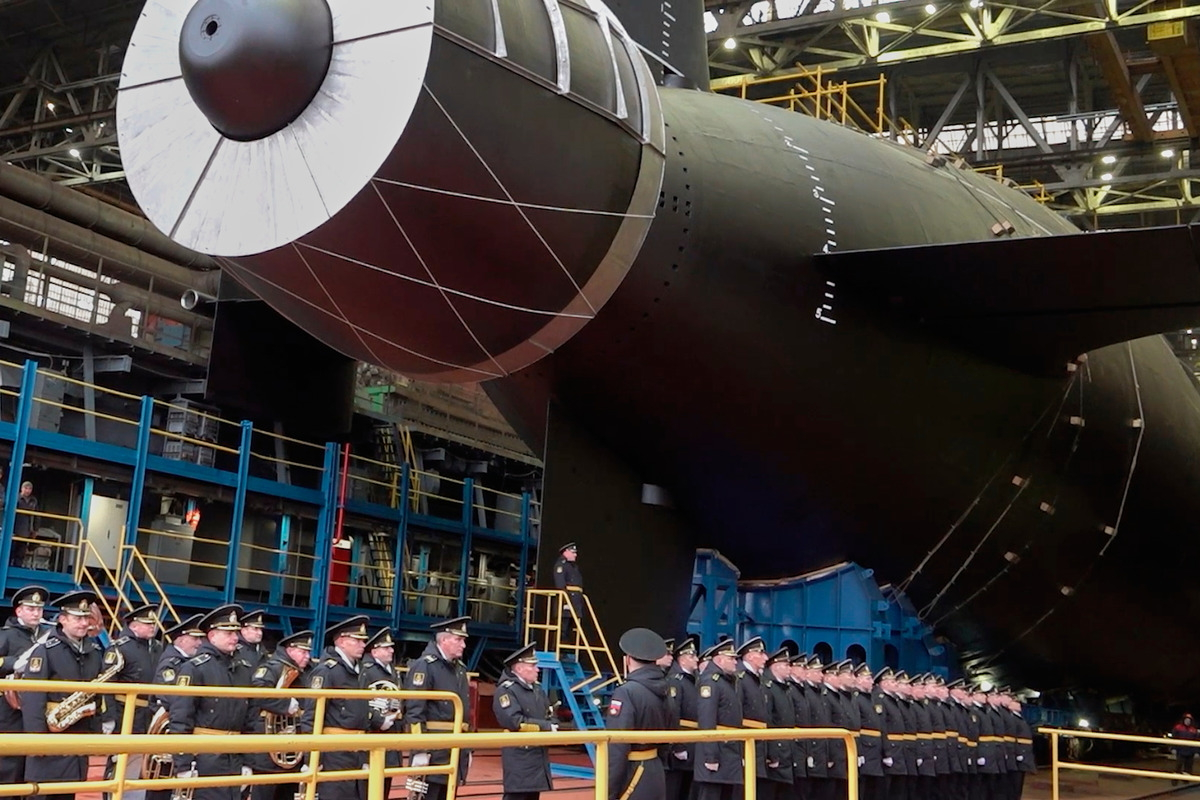Copyright newsweek

Russia has launched a new submarine able to carry Moscow’s nuclear-capable Poseidon torpedoes, a new type of weapon touted as able to produce “radioactive tsunamis.” The Khabarovsk, unveiled at a major shipyard in northwestern Russia, is the second submarine able to carry nuclear-powered Poseidon drones, part of the collection of “next-generation” weapons announced by Russian President Vladimir Putin in 2018. Russia said it had tested the Poseidon last week, shortly after another test of another one of the country’s so-called superweapons, the Burevestnik nuclear-powered cruise missile. Russia is currently upgrading its nuclear systems, including its ballistic missile (SSBN) submarines, and building new guided missile subs—the subsurface fleet is generally considered to be formidable and much more impressive than its surface counterpart. The Khabarovsk is “intended to perform navy tasks using modern naval underwater weapons, including robotic devices for various purposes,” the Russian Defense Ministry said on Saturday. The weapons on board the Khabarovsk will protect Russia’s territory and Moscow’s interests around the world, Defense Minister Andrey Belousov said. The “Khabarovsk” nuclear submarine is seen during launches at the Sevmash shipyard in Severodvindk, Russia, on Novermber 1, 2025. (Russian Defense Ministry Press Service via AP) What Do We Know About the Khabarovsk? Analysts say the new submarine appears to be based off the Russian Borei class of SSBNs, able to lurk deep under the surface without being detected. The Khabarovsk, like the Borei-class, is designed to “hide unseen in the deep ocean, hoping the moment will never come [when] it is called on to use its weapons,” said Frederik Mertens, a strategic analyst with the Dutch research organization, TNO. The Poseidon, first glimpsed on Russian state television a decade ago, was developed to travel very large distances and trigger a city-destroying tsunami. The multiple Poseidon torpedoes the Khabarovsk can carry would travel much slower than submarine-launched ballistic missiles, and would likely only be fired in a full-on nuclear war. Some disputed reports have suggested it could be used against enemy vessels, like aircraft carriers, but the information is murky and this would likely be very difficult. The Poseidon and Burevestnik are major, expensive projects for Moscow, and “pure terror weapons intended never to be used,” Mertens told Newsweek. The U.S. Navy does not really have an equivalent to the Khabarovsk; the U.S.’s in-use Ohio-class, firing submarine-launched ballistic missiles and not nuclear-powered drones, is a very rough analogue for the Borei-class. The U.S. has not developed a weapon similar to the Poseidon, either. “They don’t need it,” Mertens said. “So they have no boat that has these capabilities.” The Khabarovsk is slightly smaller than the Belgorod, the first submarine able to carry Poseidon torpedoes, military analyst H.I. Sutton said in a recent commentary. But its public roll out was set back by the COVID-19 pandemic, and likely influenced by design tweaks and pressures of the Ukraine war, Sutton said. Russian state media has acknowledged the Belgorod was also delayed in part by the pandemic. The Khabarovsk is expected to begin sea trials soon, Russia said.



